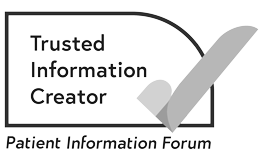Watch and wait for Hodgkin lymphoma
Watch and wait means delaying treatment until it is needed. It is sometimes used for a type of Hodgkin lymphoma called NLPHL.
What is watch and wait (active monitoring)?
If you have nodular lymphocyte predominant Hodgkin lymphoma (NLPHL), your cancer doctor may suggest not starting treatment straight away.
Instead, you will have regular tests and appointments to monitor the lymphoma and check for signs that you need to start treatment. This is called watch and wait. It may also be called active surveillance or active monitoring. It is a way of delaying treatment until it is needed.
Your cancer doctor may suggest watch and wait if:
- you had a small area of NLPHL completely removed by surgery or treated with radiotherapy
- you have NLPHL and you do not have symptoms
- you have NLPHL and symptoms are not causing any problems
- you have NLPHL that has come back, but you do not have any symptoms or symptoms are not causing any problems.
NLPHL often develops slowly, and you may not need treatment for a long time. Watch and wait does not make your treatment less effective when you need it.
Sometimes people worry about not having treatment straight away. But there can be advantages to delaying treatment. Cancer treatments cause side effects. Some side effects may be long-term or start to affect your health years after treatment. Watch and wait means you can have treatment when you need it and avoid side effects for as long as possible.
In the video below, Dr Robert Marcus explains how patients with lymphoma are regularly monitored until treatment starts.
View the video without BSL interpreter on our YouTube Channel.
Coping with watch and wait
If you are worried about delaying treatment, here are some helpful tips:
- Make sure you understand why watch and wait is recommended and what other treatment options there may be. If you have any concerns, talk to your cancer doctor.
- Think of your time without treatment as an opportunity to make the most of a good quality of life. Use it to do things you normally enjoy, and to get as fit and healthy as you can.
- Try to focus on the present rather than what might happen in the future.
- Express your feelings. You can do this by talking to family and friends, joining a support group or online forum, or by keeping a journal.
Although watch and wait can be difficult to adjust to at first, many people find it gets easier with time.
About our information
This information has been written, revised and edited by Macmillan Cancer Support’s Cancer Information Development team. It has been reviewed by expert medical and health professionals and people living with cancer.
-
References
Below is a sample of the sources used in our lymphoma information. If you would like more information about the sources we use, please contact us at informationproductionteam@macmillan.org.uk
Follows GA, Barrington SF, et al. Guideline for the first-line management of Classical Hodgkin Lymphoma — A British Society for Haematology guideline. Br J Haematol, 2022; 197, 558– 572. [accessed April 2024].
Fox CP, Chaganti S, McIlroy G, et al. The management of newly diagnosed large B-cell lymphoma: A British Society for Haematology Guideline. Br J Haematol. 2024; 204(4):1178–92. [accessed April 2024].
McKay P, Fielding P, et al. Guidelines for the investigation and management of nodular lymphocyte predominant Hodgkin lymphoma. Br J Haematol, 2015; 172, 32-43. [accessed April 2024].
McNamara C, Montoto S, et al. The investigation and management of follicular lymphoma. Br J Haematol, 2020; 191, 363-381. [accessed April 2024].
National Institute for Health and Care Excellence. Non-Hodgkin’s lymphoma: diagnosis and management. NICE guideline [NG52]. Published: 20 July 2016. Last update Oct 2021. [accessed April 2024].
Date reviewed

Our cancer information meets the PIF TICK quality mark.
This means it is easy to use, up-to-date and based on the latest evidence. Learn more about how we produce our information.
The language we use
We want everyone affected by cancer to feel our information is written for them.
We want our information to be as clear as possible. To do this, we try to:
- use plain English
- explain medical words
- use short sentences
- use illustrations to explain text
- structure the information clearly
- make sure important points are clear.
We use gender-inclusive language and talk to our readers as ‘you’ so that everyone feels included. Where clinically necessary we use the terms ‘men’ and ‘women’ or ‘male’ and ‘female’. For example, we do so when talking about parts of the body or mentioning statistics or research about who is affected.
You can read more about how we produce our information here.





